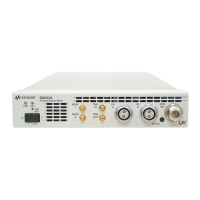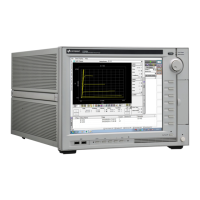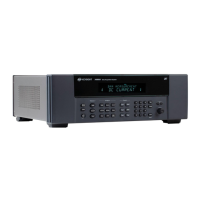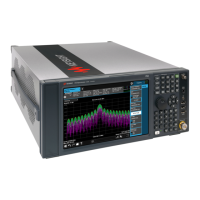24
N5250A Configuration Details
– N5250A MM PNA system
1
, 10 MHz to 110 GHz,
includes:
E8361A MW PNA with the following options:
– Configurable test set – Option 014
– Extended power range and bias-tees – Option UNL
– Frequency-offset mode – Option 080
– Reference channel switch – Option 081
– IF access – Option H11
– N5260A millimeter-wave test set controller with test heads
– 67 to 110 GHz test heads
– 1.0 mm combiner assembly
– Interconnecting cables
– Installation and productivity assistance
– Additional options available:
– Millimeter-wave modules with bias-tees - N5250A Option 017
– Millimeter-wave modules with bias-tees and port 2
attenuator – N5250A Option 018
– Receiver attenuator – Option 016
– Time-domain capability – Option 010
– Pulsed-RF measurement capability – Option H08
2
– Scalar-calibrated converter measurements – Option 082
2
– Frequency converter application – Option 083
2
Factory integration of the N5250A system integrates the
E8361A with Option H11 and the N5260A millimeter-wave
controller with test heads and on-site installation is
included.
Option Descriptions
– Millimeter-wave modules with bias-tees (N5250A Option 017)
Adds 67 GHz bias-tees to the combiner assembly between the
input to the combiner and the 67 GHz coupler. The bias-tees have
tri-axial connectors for force, sense, and ground. Positioning the
bias-tees close to the DUT greatly improves stability for on-wafer
and in-fixture devices. The bias-tees added for this option have a
voltage rating of 40 volts and a maximum of 0.5 amps.
– Millimeter-wave modules with bias-tees and port 2 attenuator
(N5250A Option 018)
Adds 67 GHz bias-tees to the combiner assembly between the
input to the combiner and the 67 GHz coupler. The bias-tees have
tri-axial connectors for force, sense, and ground. Positioning the
bias-tees close to the DUT greatly improves stability for on-wafer
and in-fixture devices. The bias-tees added for this option have a
voltage rating of 40 volts and a maximum of 0.5 amps Additionally,
Option 018 adds a 25 dB micrometer attenuator to the port 2 test
head.
Banded waveguide solution
In order to assemble a banded waveguide solution, the
following components are needed:
– Microwave PNA network analyzer (E8361A or E8362/3/4B) with
the following options:
– IF access – Option H11
– Configurable test set – Option 014
– Extended power range and bias-tees – Option UNL
– Frequency-offset mode – Option 080
– Reference channel switch – Option 081
– Millimeter-wave test set controller (N5260A) with no options
– A set of waveguide modules:
– N5260AW15, 50 to 75 GHz
– N5260AW12, 60 to 90 GHz
– N5260AW10, 75 to 110 GHz
– N5260AW08, 90 to 140 GHz
– N5260AW06, 110 to 170 GHz
– N5260AW05, 140 to 220 GHz
– N5260AW03, 220 to 325 GHz
NOTE: To significantly improve system dynamic range above
220 GHz, Keysight strongly recommends adding two
external synthesizers such as Keysight’s PSG Series signal
generators;
one for the RF signal, and one for the LO signal.
For more detailed information, see PNA Millimeter-wave
Technical Overview, literature number 5988-9620EN.
On-wafer applications
For on-wafer applications, Cascade Microtech
3
provides
complete probing systems using the N5250A. These
include both new probing systems and upgrades to existing
Cascade Microtech products. Cascade can also provide
on-wafer verification and probing system training. Once the
N5250A system is verified in coax, Cascade Microtech will
verify the system through its wafer probes.
1. For more detailed information regarding the 110 GHz network analyzer system, refer
to the Keysight Web site: www.keysight.com/nd/pna and download the N5250A
Technical Overview, literature number 5988-9620EN.
2. Up to 67 GHz.
3. Cascade Microtech is a Keysight Channel Partner.

